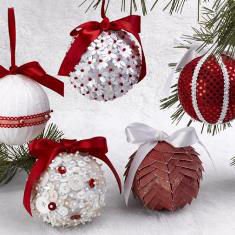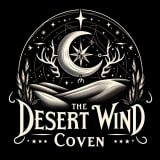
We’re fortunate to have a “temple room” that is closed to the rest of the house most of the time; we put up an extra tree back there, and after the Yule ritual, we open that room and bring out a box or two of unbreakable ornaments for our guests—some years including children as young as 3 or 4 years old—to hang on the tree.
Most years, we put a few strings of lights on the tree first, weaving them among the branches close to the trunk. That takes quite some time, and the lights are breakable, so we don’t let our guests worry that they or their children will wreck a string or hurt themselves.
Some of the ornaments that go on this very special Yule tree are family heirlooms—paper and cloth ornaments our son, the Explorer, or his friends made years ago. But most of them are red and green and purple balls, the kinds you can get pretty inexpensively at any craft store, and at many department and drugstores. We’ve got a few shiny plastic lemons, limes, apples, and oranges, too, and those are just as much fun to hang. Best of all, if you drop them, they just bounce and roll across the floor. You hear the occasional “oops!” but never any hushed or worried “uh-ohs.”


